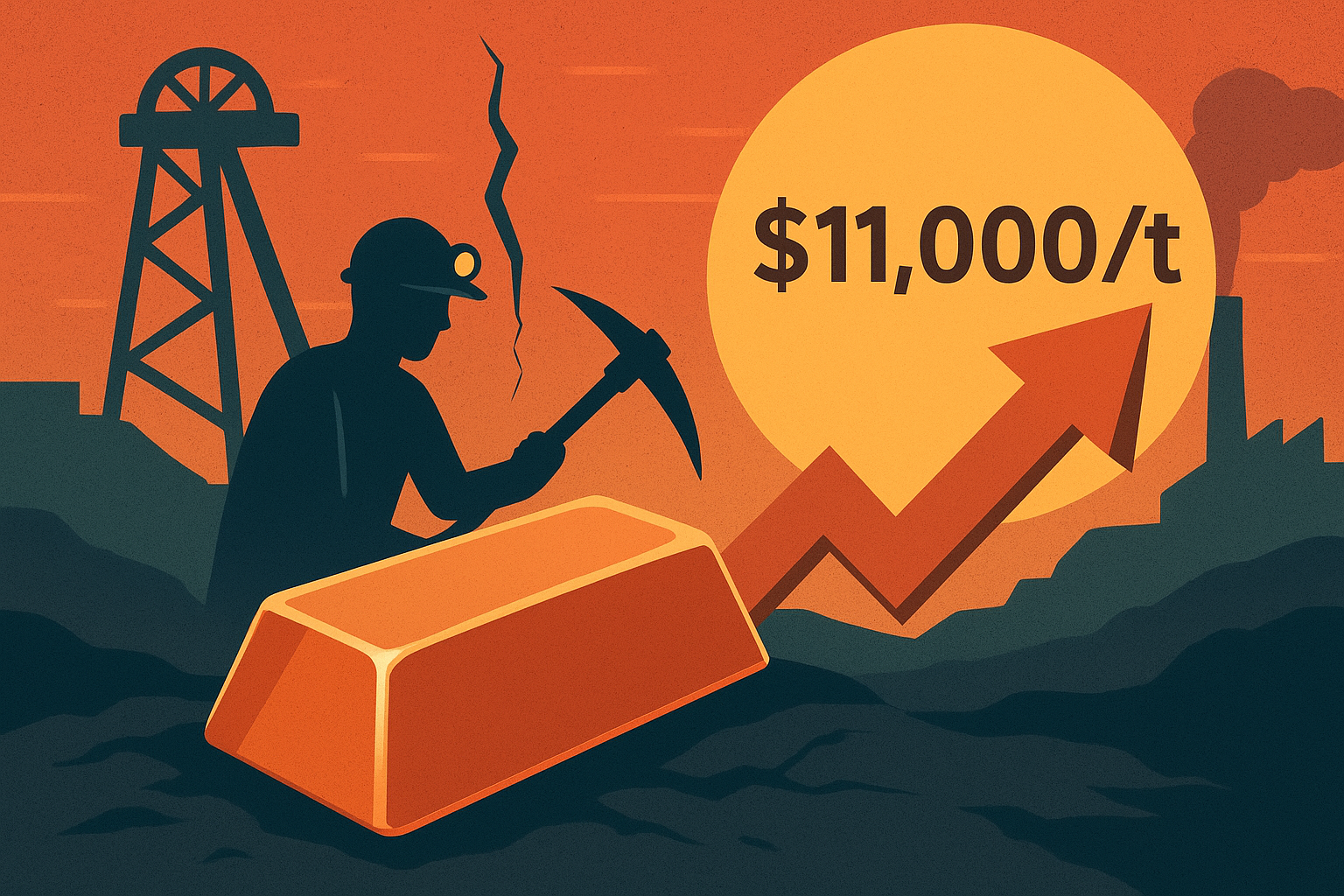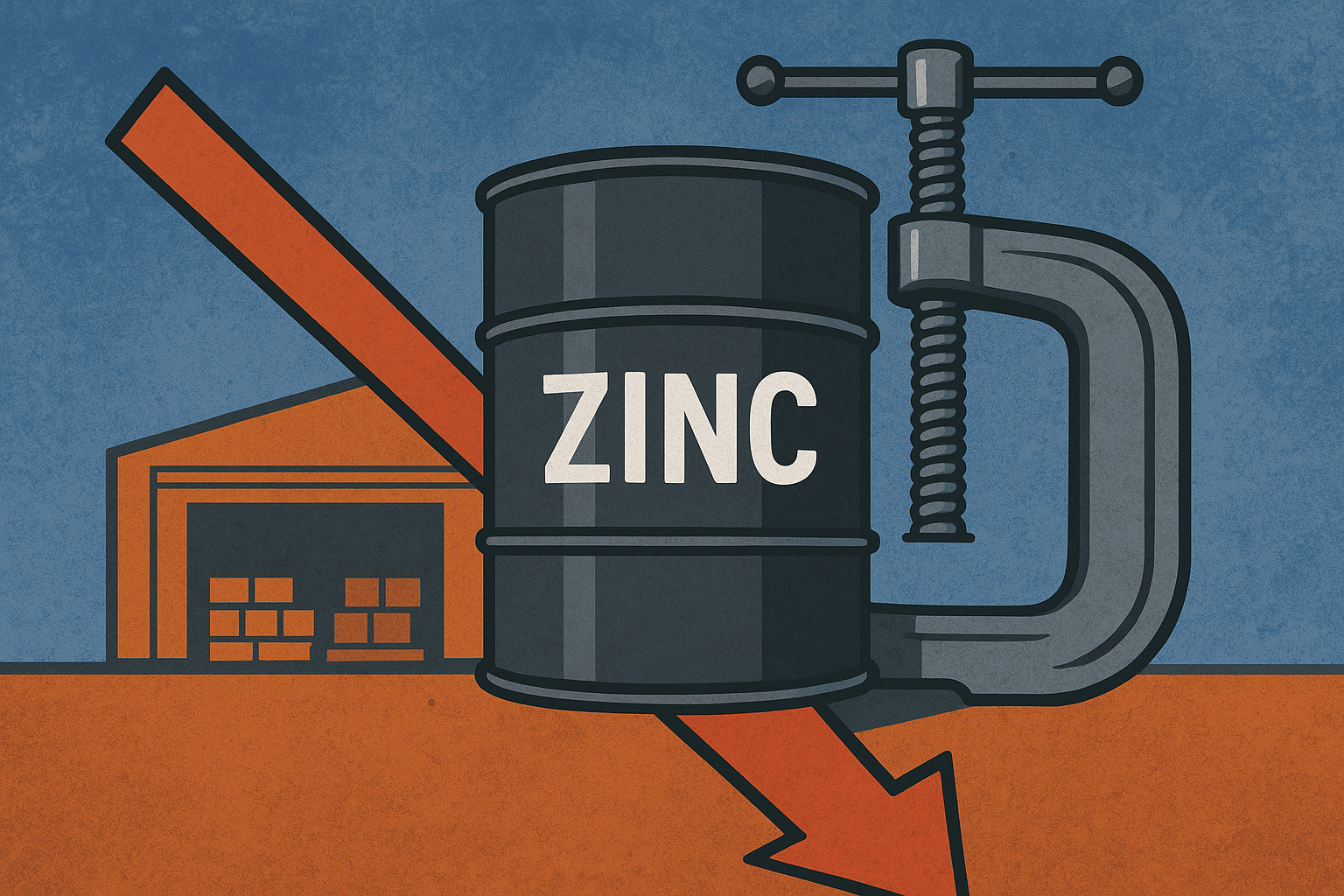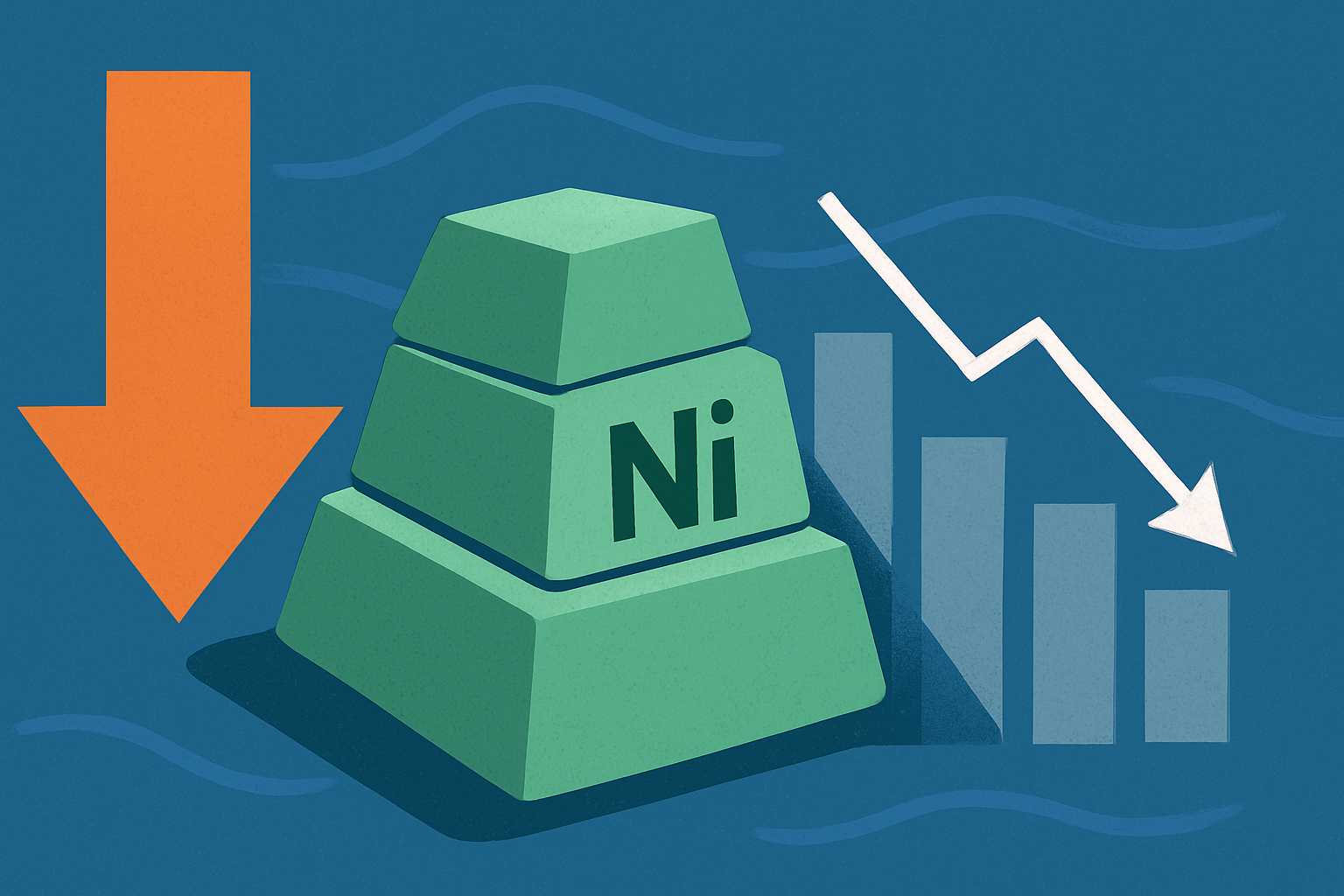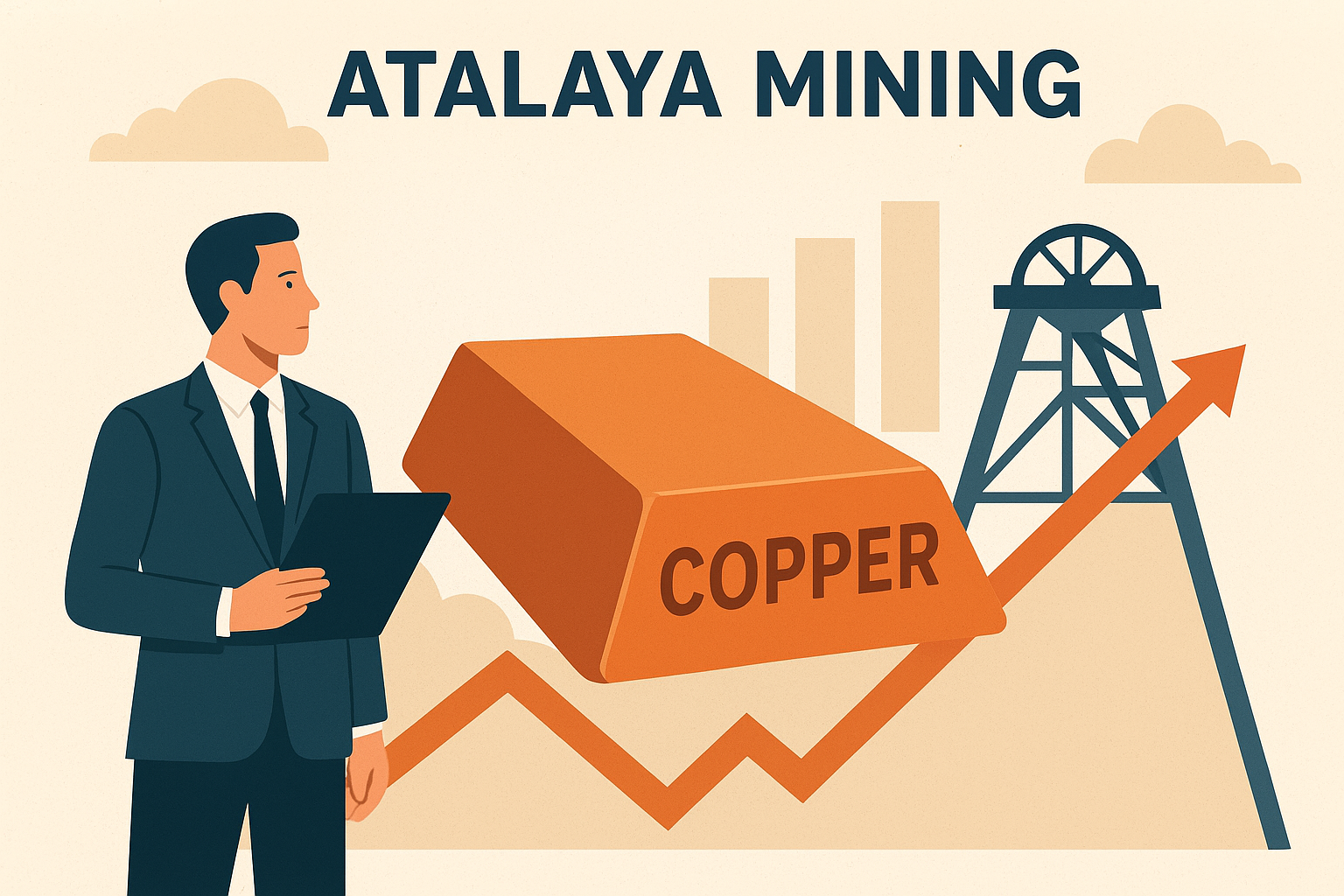Copper’s Breakout Signals a New Phase for Base Metals Investors
Copper has surged past US$11,000 per metric ton, marking its highest level since May 2024, and sending ripples through global commodity markets. The rally — fueled by supply disruptions in key producing nations and speculative buying — is reigniting investor interest in the “red metal” that’s central to electrification, infrastructure, and AI-driven industrial growth.
According to Reuters, disruptions in Indonesia’s Grasberg mine and reduced output from Chile’s Codelco, the world’s largest copper producer, have tightened global supply. Codelco’s August production reportedly dropped by around 25% following a deadly mine accident, compounding an already stressed market.
The move has sparked debate among investors and analysts: is copper entering a structural bull phase, or is this another speculative spike before a correction?
Global Supply Pressures Drive the Rally
The latest rally underscores just how fragile the copper supply chain has become. With ESG regulations, declining ore grades, and operational setbacks constraining supply growth, even minor disruptions can now send prices soaring.
- Chile and Peru, which together account for nearly 40% of global copper output, have both reported operational delays and labor tensions.
- Indonesia’s export restrictions on copper concentrate, tied to its downstream processing policies, have reduced international shipments.
- At the same time, speculative trading volumes on the London Metal Exchange (LME) and Shanghai Futures Exchange (SHFE) have jumped more than 20% week-over-week, according to market data from Refinitiv.
Analysts at Bloomberg Intelligence note that inventories in LME warehouses have dropped to their lowest level in over a year, signaling a tightening physical market. This has led some traders to project short-term price targets as high as US$11,500/t, particularly if supply tightness persists through Q4 2025.
Why This Matters for Investors
Copper’s price trajectory isn’t just about mining disruptions — it’s a reflection of the broader energy transition story. The metal is indispensable to electric vehicles (EVs), renewable power grids, data centers, and AI infrastructure — sectors currently experiencing explosive growth.
For investors, this convergence of limited supply and expanding demand could present a long-term opportunity. However, analysts warn that volatility remains elevated. A resolution of current disruptions or a slowdown in manufacturing activity, particularly in China, could pull prices back sharply.
“Copper’s fundamentals are bullish, but sentiment is driving much of the current surge,” said one commodities strategist from HSBC Global Research. “If macro conditions tighten — say, if the U.S. dollar strengthens or rate cut bets fade — we could see a correction toward the US$10,000 range before the next leg higher.”
Future Trends to Watch
1. Electrification and AI Infrastructure:
Global investments in grid upgrades and data center expansion are surging. AI server and semiconductor infrastructure alone could add 5–6% to copper demand growth by 2027, according to Goldman Sachs.
2. Supply Chain Reconfiguration:
Countries are pushing to onshore or friend-shore critical mineral production. Expect higher capital expenditure from major miners like BHP, Rio Tinto, and Freeport-McMoRan, who are racing to secure new deposits and expand smelting capacity.
3. Policy and Geopolitical Shifts:
Watch for fiscal or tax policy changes in Chile, Peru, and Indonesia, which could impact producer margins and export flows. Environmental licensing delays are also emerging as a recurring risk factor.
4. Speculative Positioning:
LME data shows that hedge funds have increased net-long copper positions to their highest since early 2023. While this supports short-term momentum, it also raises the risk of a sharp reversal if macro sentiment shifts.
Key Investment Insight
Copper’s breakout reinforces its dual identity as both a cyclical industrial metal and a strategic clean-energy asset. For investors, the current setup favors selective exposure — not wholesale chasing of momentum.
Preferred plays:
- Established producers with diversified output and robust balance sheets (e.g., BHP, Freeport-McMoRan, Southern Copper Corp.)
- Junior explorers with assets in stable jurisdictions showing near-term production potential
- Copper-focused ETFs or diversified commodity funds for risk-adjusted exposure
That said, caution is warranted. The market’s sensitivity to geopolitical headlines, labor unrest, or macro shifts could trigger sudden retracements. Short-term traders should watch LME inventories, Chinese manufacturing PMI data, and U.S. dollar trends as key catalysts.
Stay Ahead of Market Momentum
As copper takes center stage again, investors are reminded that supply-driven rallies can create both exceptional opportunities and heightened risks. Staying informed — not just about prices, but about policy, logistics, and technological shifts — is essential.
For ongoing coverage of metals markets, mining equities, and the trends shaping global resources, follow explorationstocks.com — your daily source for investor intelligence in the commodities and energy transition space.






